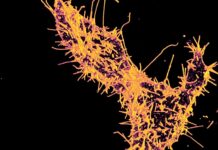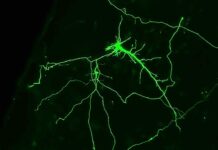Recent scientific research has unearthed a riveting discovery, one that has shattered the conventional wisdom surrounding tumor-specific antigens. Two groundbreaking studies published on February 3, 2021, in the prestigious journal Science, revealed that these enigmatic proteins may be associated with transposable elements (TEs), also known as “jumping genes,” which sneak into messenger RNA (mRNA) molecules and attach themselves to exons. The resulting peptides have been found exclusively on tumor cells and are shown to stimulate an immune response, raising the potential of more targeted and effective cancer therapies.
Tumor-Specific Antigens: A Brief Overview
Tumor-specific antigens are proteins that are exclusive to tumor cells and are exhibited on their surfaces. T-cells, the body’s immune system warriors, are tasked with seeking out these antigens and destroying them. These proteins can cause tumors to regress, and in some cases, disappear altogether. However, the sequence of the vast majority of tumor-specific antigens and their emergence still elude scientists.
Unraveling the Role of Jumping Genes and mRNA Splicing
During the initial transcription of genes from DNA, exons are glued together to form an mRNA molecule. In contrast, introns, short DNA sequences that do not encode parts of the protein, are discarded. The entire process is known as splicing. Introns can consist of transposable elements, also called “jumping genes,” which are capable of moving to other segments of the genome.
The Study: A Momentous Breakthrough
Both studies demonstrate that certain tumor-specific antigens could result from jumping genes that attach themselves to exons in mRNA molecules. In the first research paper, the scientists utilized RNA sequencing to map JETs (Jumping Element Transcripts) in three tumor cell lines and normal cells. They discovered that nearly one percent of these curious splicing events occurred solely in tumors, and that these peptides could mobilize anti-tumor T-cells, leading to tumor protection in mice. The second paper followed a comparable methodology in human cells, yielding similar results.
Clinical Implications: The Future is Promising
Co-author of both studies, Sebastian Amigorena, believes that his findings could have a clinical impact. He intends to test whether JETs could serve as potential markers or targets for cancer therapies. While these findings have the potential to be translated into clinical applications, the majority of JETs are not tumor-specific, which could be a significant obstacle to implementation.
Future Research: Delving into the Unknown
The current research findings provide a glimpse into the intricate connection between jumping genes and tumor-specific antigens. Further studies are required to fully comprehend the role of transposable elements in the development of these proteins. Scientists will need to identify more specific JETs that are exclusive to tumor cells and have the potential to stimulate an immune response.
Conclusion: A Step Forward in Cancer Research
These studies have provided critical insights into the origins of tumor-specific antigens and the potential of JETs in cancer immunotherapy. By identifying JETs that are unique to tumor cells, researchers may develop cancer vaccines or other treatments that are better directed towards tumors. These findings represent a significant step forward in cancer research and could have a transformative impact on cancer treatment.
Google News | Telegram
















